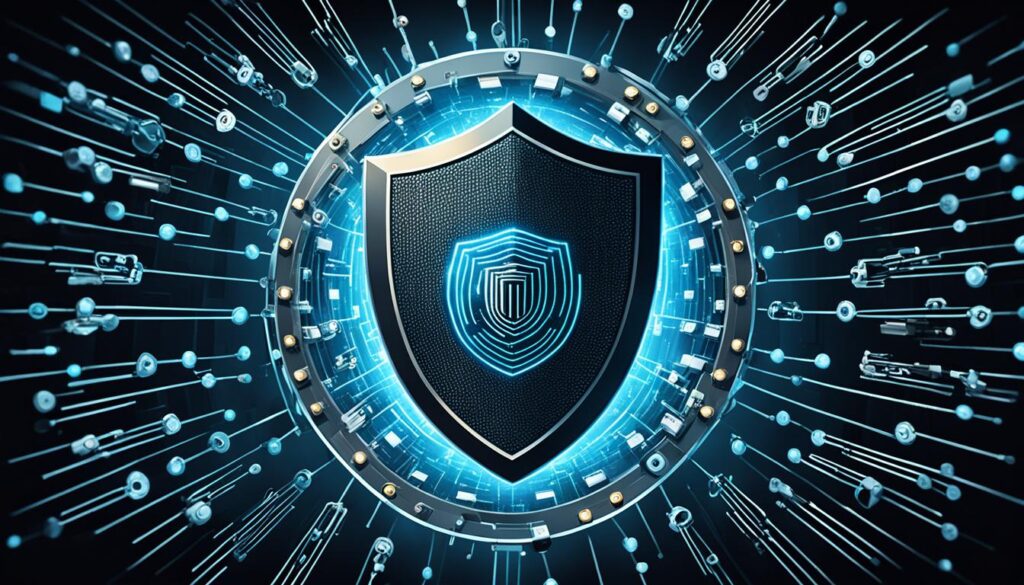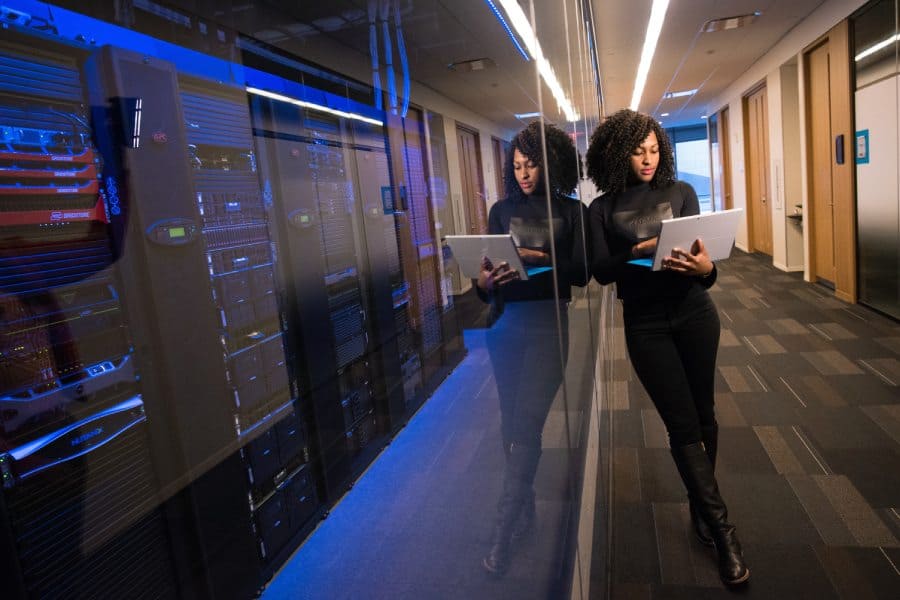10 Most Common Types of Cyber Attacks 2024

Top 10 Most Common Types of Cyber Attacks Today
Common Types of Cyber Attacks: Do you know about cyber threats that change constantly? Are you familiar with threats that can harm your online safety? We’re going to look into various cyber attacks. We’ll see how cybercriminals use these to find and misuse weak points.
Ark Solvers welcomes you. Here, we’ll discuss the top ten cyber attacks putting our online lives at risk. From smart phishing to harmful ransomware, we’ll cover each threat. And we’ll empower you with the information needed to stay safe.
Ready to boost your online safety and rethink digital dangers? Dive in with us. Let’s uncover the secrets of these common cyber attacks together.

Phishing Attacks
Phishing attacks deceive people into sharing sensitive info. They pretend to be from trusted sources. This tricks individuals into giving out personal or financial data.
These attacks exploit people’s trust and lack of knowledge. Cybercriminals then use this information to gain unauthorized access.
Phishing has many forms, including spear phishing and pharming. Spear phishing targets specific people with personal messages that seem real. Pharming tricks victims into fake websites using DNS server tricks.
Phishing often uses social engineering, a way of tricking people. It tries to get victims to share secrets or do harmful things for the attacker’s gain. It uses emotions like fear or curiosity.
Read More: Different Types of Cyber Security
Imagine this scenario:
- Attackers send an email pretending to be a famous retailer. They say the victim’s account is in trouble.
- The email warns the user to act fast to avoid harm.
- It provides a link to a fake website that looks real.
- When the victim gives their info on the site, the attackers steal it.
Always be careful with emails, texts, or sites asking for personal details. Here’s how to stay safe:
- Question any unexpected demand for data. Avoid clicking on strange links or opening unknown email attachments.
- Check that website addresses and security signs like the padlock and ‘https’ are present to be sure they are safe.
- Make sure your computer’s defenses are strong by updating security software and operating systems regularly.
- Keep an eye on your bank accounts to catch any fishy transactions right away.
Knowing about phishing and staying alert can keep you safe. By being proactive, you decrease the chances of being tricked.

Malware Attacks
Malware attacks are a huge threat to our online safety. Hackers use different types of bad software to mess with our computers or get into them without permission.
Hackers have several ways to attack with malware. Knowing how they do it is key to keeping our data safe. It’s important to learn about these threats to fight against them.
Types of Malware Attacks
- Virus: Viruses copy themselves and spread to other computer files, causing harm as they go.
- Trojan Horse: Trojans look like real software but are trying to trick us. Once we download them, they give attackers entry to our systems.
- Worms: Worms are not actual worms but programs that make copies of themselves. They move through networks and aim to mess up systems.
- Ransomware: Ransomware locks our files and asks for money to unlock them. It can be very costly and disruptive.
- Spyware: Spyware hides on our devices and watches what we do without our knowledge. It takes our info, like passwords or what we look at online.
- Adware: Adware shows us a lot of ads we don’t want and might collect our info to show us more targeted ads.
Being safe from malware starts with good cybersecurity habits. Use strong antivirus software, keep everything updated, and be careful what you download or click on online.
Risks of Malware Infections
might lead to:
- Stealing data: Malware can swipe our personal or financial info, causing us harm or loss.
- Braking systems: Our computers may not work anymore, causing downtime and loss of work time.
- Money loss: Ransomware can cost a lot of money to fix if we choose to pay to get our files back.
- Hurting reputation: If malware messes with customer data or services, it can bruise a company’s image and trust.
Knowing about malware is the first step in defending against it. By learning and taking steps to protect ourselves, we can reduce the risk of malware attacks.

Ransomware Attacks
Ransomware attacks have spiked in danger over recent years. They work by locking up a person’s or a business’s digital files and demanding payment for their release. When files are locked, the victim can’t use them, which can cause big problems and costs for whoever is attacked.
Ransomware can cause huge problems. Both individuals and big organizations can fall victim. The attackers look for weak security points. The cost to get the files back can be small or very large, often paid in digital currency. If the payment isn’t made, the files are usually recovered for good.
To fight off ransomware:
- Put strong defenses in place.
- Keep your systems up to date with the latest security info.
- Use passwords that are hard to guess.
Two-factor authentication is also helpful. Teach everyone to watch out for shady emails that might carry ransomware.
- Regularly backup your important data and ensure the backups are stored securely offline.
- Use antivirus programs that are known to protect against viruses. Keep them updated.
- Be careful with email attachments and downloads from unknown sources.
- Refrain from giving some high-level access. This can lessen the damage of an attack.
- Keep an eye on network and system activity for anything suspicious.
Deep breath. If you’re hit by ransomware, stay calm. Follow a clear plan for what to do next. This might include taking infected machines off the network. It’s also a good idea to get the police involved. Plus, reach out to professionals like Ark Solvers for help.
Distributed Denial of Service (DDoS) Attacks
Network security often faces big threats, such as DDoS attacks. These attacks make it hard for real users to access a website by flooding it with too much traffic. They can cause downtime, money loss, and damage to a company’s reputation.
DDoS attacks work by overloading a system with a huge amount of requests. As a result, the system can’t keep up and stops working. There are several ways attackers carry out these attacks, including:
- Exploiting TCP/IP by sending lots of SYN requests without finishing the handshake.
- Flooding web servers with too many HTTP requests use up all their resources.
- Overloading a target server by sending a massive amount of UDP packets uses a lot of network resources.
Knowing how DDoS attacks work is key to stopping them. To reduce the damage, there are some steps you can take:
- Use strong systems to spot and deal with DDoS attacks quickly.
- Set up firewalls and IPS systems to stop harmful traffic.
- Use CDNs to spread traffic out and lessen the blow of the attack.
- Limit traffic coming in and shape it to keep the network from overloading.
Businesses must take steps to improve their network security against DDoS attacks. By being proactive and using these methods, the risk of an attack decreases. Always work to keep your network safe and secure your digital property.
Insider Threats
Insider threats are a big worry for companies dealing with cybersecurity problems. These threats come from people already inside the organization. They might misuse their rights on purpose or by accident. This can lead to stealing important data or causing financial and reputation damage.
There are many kinds of insider threats. They could be simple actions like clicking on a harmful link unknowingly. Or they could be bigger, like sharing secret data on purpose. Regardless of size, these issues can cause harm.
Companies should set up strong defenses against these threats. They should control who gets to see what. They should also train their workers to keep things safe. Lastly, there should be clear rules for reporting anything suspicious.
Strategies for Detecting and Preventing Insider Threats
- Put in place a system that only lets people see what they need for their job.
- Watch closely what people are doing on the company network. This helps find actions that are not normal.
- Keep all software up to date to protect against common tricks insiders might use.
- Teach your employees about the dangers they could face from insider threats. Also, they should be shown how to spot and report these problems.
- Have a good plan in place to react fast if an insider threat is found.
- Check your security often to make sure there are no holes that attackers could use.
By using these methods, companies can be better at finding and stopping insider threats. It’s also important that everyone in the company knows how to keep things safe. This way, the company is better protected from the inside out.

Zero-day Attacks
Zero-day attacks are a special kind of cyber threat. They use holes in software that developers have yet to learn about, or that still need to be fixed. This makes users vulnerable because the problems aren’t solved in time.
Hackers use zero-day attacks on software, such as operating systems and web browsers, to gain access without permission. This can lead to big problems for people, companies, and even a country’s safety.
Cybersecurity experts find zero-day attacks very difficult to deal with, and normal security tools might not be able to stop them. This is because the problems are new and unknown.
Stopping zero-day attacks requires being proactive. Developers should test software’s security frequently and fix problems quickly, which will prevent attacks before they happen.
People and groups should use many security methods. This makes a strong defense. For example, tools can be used to find threats early and teach everyone to avoid risky links and files.
Knowing about new security threats is key. Keep up with the latest news and work with experts. This helps you be ready for what’s coming.
Cyber Extortion
Cyber extortion is a dangerous tactic used by criminals to force people or groups to pay a ransom. They often use ransomware, a kind of harmful software that can block access to your files until you pay.
There has been a big increase in cyber extortion cases recently. Criminals see it as a way to make a lot of money. They like it because you do need help tracing who’s getting the money, as it’s often in cryptocurrencies.
Extortionists use many methods of attack. They often begin with phishing emails or messages. They trick you into clicking on bad links or giving away important information. After that, they might lock your files, threaten to share secret information or disrupt important services—all unless you pay them.
To stay safe from cyber extortion, you need to be proactive. It’s key to keep regular backups of your data that are not online. Also, use strong security like firewalls, antivirus, and monitoring. These can help spot and stop attacks before they cause too much damage.
Building a strong security culture in your workplace is also very important. This means making sure everyone knows about the risks of phishing and how to create strong passwords. If anyone spots something fishy, they need to report it right away. This can make your digital space harder to attack.
It’s vital to keep learning about the latest cyber extortion schemes. By staying sharp and using good security, we can protect our digital stuff from these threats.
Data Breach Attacks
Data breach attacks are a major worry for people and groups. They happen when someone gets into private data without permission. This can lead to problems like losing money, hurting your reputation, and getting in legal trouble.
It’s important to keep your data safe from these attacks. It would help if you did some key things to protect your information:
- Choose strong, hard-to-guess passwords for all your accounts. A password manager can help keep them safe.
- Turn on multifactor authentication (MFA) when you can. It makes it even harder for others to get into your accounts.
- Teach your team why data security matters and how to spot and deal with dangers. Regular training helps everyone stay sharp.
- Don’t hesitate to update your software and devices. These updates often fix security holes that hackers look for.
- Use encryption to shield important data when it’s being sent or stored.
But if a breach occurs, being ready to act fast is key. Your response plan should outline how to find, report, and limit the damage.
Building a Culture of Cybersecurity
Every workplace must be serious about cybersecurity. This means making sure everyone knows security is important and what each person can do to help keep information safe.
Ark Solvers advises regular checks on your security, tests to find weak spots, and clear rules for being safe. By getting everyone involved and sharing the cybersecurity job, you can lower the chance of a breach.
Cyber Warfare Attacks
Cyber warfare attacks come from nation-states or groups. They aim to hit critical infrastructure or networks. Technological advances have made these threats more serious and important for security.
The threat of cyber-attacks keeps growing. These attacks are getting smarter and harder to stop. They can hurt everyone, causing chaos, financial harm, and data theft.
One big problem is finding out who’s behind these attacks. Since they’re conducted from afar, it takes a lot of work to point fingers, making defending against cyber warfare even harder.
Understanding Cyber Attack Vectors:
- Phishing Attacks: Attackers trick people into sharing important info or letting them into systems.
- Malware Attacks: Viruses and other bad software are used to break into or disrupt computers.
- Ransomware Attacks: Attackers lock up important files and ask for money to unlock them, leading to financial harm and chaos.
- Distributed Denial of Service (DDoS) Attacks: These attacks make websites or networks unusable by flooding them with traffic.
- Insider Threats: Some people within organizations misuse their access to harm security or steal info.
- Zero-day Attacks: These exploits target software flaws that developers haven’t fixed yet.
- Cyber Extortion: Cyber criminals demand money from individuals or firms through ransomware or other threats.
- Data Breach Attacks: These involve getting into private data without permission, leading to its theft or exposure.
The world is more linked than ever, which makes the effects of cyber warfare attacks massive. They can disrupt how societies run by targeting power, transport, and communication.
It’s key for governments and groups to be alert and prepare their defenses. Working together and sharing information is vital to facing the growing cyber threats.
Cyber Attack Prevention
The threat of cyber attacks is real for both individuals and groups today. We must actively protect ourselves by using proven strategies, which will help make our digital world more secure.
- Keep Software and Systems Updated
Updating software, systems, and apps is key to dodging cyber attacks. These updates fix holes cybercrooks could use. Turn on auto-updates to keep your guard up.
- Strong and Unique Passwords
Strong, unique passwords are a must. Don’t pick simple ones or repeat them across sites. Go for long ones with a mix of characters. You can use a password manager for this.
- Multifactor Authentication (MFA)
Making use of MFA adds a layer of defense. It means you need both a password and, say, a mobile code to log in. This helps even if someone knows your password.
- Employee Education and Training
Your work team is vital in the fight against cyber attacks. Teach them to spot threats like phishing. Being careful with what they click and share is crucial. This creates a safer work culture.
- Secure Network and Wi-Fi
Protecting your network and Wi-Fi is a big deal. Change default Wi-Fi settings to something strong. Also, think about a guest network for visitors. A good firewall also helps.
- Regular Data Backups
Backing up data often is a key defense. Make sure your critical data is backed up offline or in the cloud. This protects against ransomware, letting you restore without paying.
- Implement Security Software
Good security software is a must. Use strong antivirus and anti-malware that update automatically. A VPN can also shield your data online.
- Regular Security Audits
Checking your security often helps catch issues before they’re they can be used against you. A pro should assess your security regularly and address any gaps they find to keep your system healthy.
By following these steps, you can make your digital life safer. Cybersecurity is never done. Staying alert and informed is the best way to protect yourself online.
Conclusion: Common Types of Cyber Attacks
We’ve looked at the top ten types of cyber threats facing our online lives today. Knowing about these threats helps us make our online spaces safer. We can then stand up to cyber crooks and keep them at bay.
Phishing is like a digital con game. It fools people into giving up secret info. Malware is sneaky software that can mess up your devices. It tries to get into your stuff without you knowing. Ransomware locks up your files and asks for money to free them.
Other threats include DDoS, where attackers try to make a website or service inaccessible to users. Then there are insider threats, unique zero-day attacks, and cyber extortion, which is like digital blackmail. Data breaches and outright cyber wars are also part of the danger game.
Staying safe online is more crucial than ever. We need to be on the lookout and keep our guard up. Regular updates and learning about new cyber threats can help us protect our online world. This way, we can lower the chances of falling victim to cyber crimes.
Common Types of Cyber Attacks – FAQ
What are the most common types of cyber attacks today?
Today, the top cyber threats are phishing, malware, and ransomware attacks. They also include DDoS attacks, insider threats, and zero-day attacks. Plus, there’s cyber extortion, data breaches, cyber warfare, and social engineering.
What are phishing attacks, and how do they work?
Phishing tricks people into sharing private info by appearing trustworthy. This often happens through email or fake websites. The goal is to get personal or financial details from victims.
What are malware attacks, and what risks do they pose?
Malware is software that can harm your computer. It aims to steal data, commit fraud, or allow easy access to hackers. This can lead to financial loss or weaker security for you or your company.
What are ransomware attacks, and how can they impact us?
Ransomware locks your files and demands payment to unlock them. This can cause financial and security harm. Businesses and individuals can suffer from data breaches and operational setbacks.
What are Distributed Denial of Service (DDoS) attacks and their effects?
DDoS attacks flood a website or network, making it unusable for real users. They can lead to economic harm, destroy reputations, and erode trust. The downtime experienced by organizations can be critical, impacting customer loyalty.
What are insider threats, and how can we detect and prevent them?
Insider threats involve misusing access rights within a company. Stopping them requires strong security policies and training, as well as watching for unusual behavior.
What are zero-day attacks, and what makes them dangerous?
Zero-day attacks use unknown bugs in software to bypass security. Since they’re new, they’re hard to defend against, leaving systems open to attack.
What is cyber extortion, and how can we protect against it?
Cyber extortion aims to scare people or groups into paying. To protect yourself, make sure you have regular data backups. Strong security and education on spotting threats are also key.
What are data breach attacks, and how can they impact us?
Data breaches involve stealing or exposing personal info. They can hurt finances, ruin reputation, and lead to identity theft. Both people and companies can suffer from these crimes.
What are cyber warfare attacks, and what are their potential implications?
Cyber warfare targets key parts of a nation’s tech, risking lives and national security. They can destroy critical systems, leading to chaos. Public safety is at stake in these intrusions.
How can we prevent cyber attacks and enhance cybersecurity?
To be safe, use strong passwords and update your software. Firewalls and antivirus software help, as does educate workers on cyber threats. Always back up your data and keep an eye on the latest dangers.







